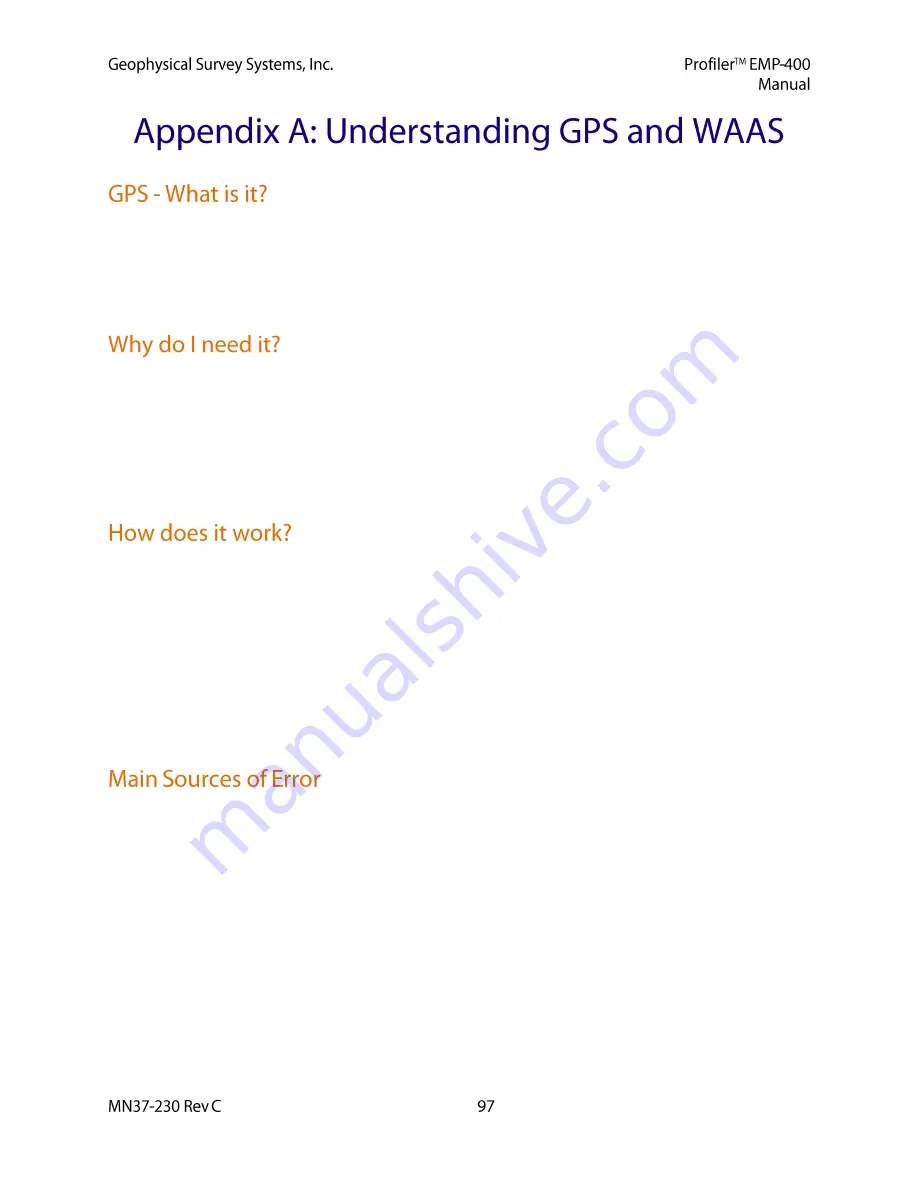
WAAS GPS is a navigation system designed to provide instantaneous position, velocity and time
information almost anywhere on the globe at any time, and in any weather. It typically provides
positioning accuracies of approximately 3 meters. Since GPS receivers need to see much of the sky, it
works poorly indoors, in the woods and in urban and semi-urban areas where nearby buildings create GPS
signal multi-path problems.
You probably don’t. In fact, for many EM applications you can just use a measuring tape and stakes or
spray paint to measure and mark out your grid and take notes about your site an transect start and stop
locations. Since post-survey verification digging or drilling often requires more precision than 3 meters,
knowing approximately where you are is not helpful. However, as surveys become larger and as
technologies improve, WAAS GPS can be very helpful in telling you where you are on a map, or what
road you turned onto, or what section of the site you have already covered. Increasingly WAAS GPS is
claiming a legitimate place in the ever-increasing size and variety of geophysical applications.
Standard GPS works by three-dimensional trilateration of the distance from a constellation of GPS
satellites in space. The satellites measure the time is takes a GPS satellite signal to travel from one point
to another very accurately and then estimate the distance based on the travel-time of the signal using the
speed of light as the signal velocity. Getting the travel-time calculations from just three satellites is
enough to know where you approximately are on the earth. Four or more satellites are required for higher
accuracy. Getting the travel-time from 6 or more satellites greatly decreases the uncertainty of your
position. Typically, around buildings and trees you might see six satellites, plenty to know where you are
to within 3 meters. The degree of precision depends on many things like how well distributed the
satellites are in the sky or the precise travel path the signal takes to get from the GPS satellites to your
GPS receiver.
The GPS signal travel-times and paths are directly affected by the medium through which the signals are
transmitted. For GPS, this means the signal from the satellites to your receiver can be slowed down and
bent by changes in the Ionosphere, the Troposphere and nearby objects. These sources of error are
illustrated in Figure 136. These sources of error can be reduced using expensive tricks like dual frequency
systems, Klobuchar modeling, and Real Time Kinematic (RTK) solutions. The least expensive way to
correct for these errors is through Differential GPS (DGPS), where data from a second stationary base
station GPS is subtracted from a roving GPS or in the form of a differential GPS signal coming from a
GPS satellite or ground beacon. Such differential signals are provide at extra cost through subscription
services such as OMNISTAR or THALES. Compared to the distance from the satellite, the distance
between a base station and rover is insignificant, which means that the travel paths through the ionosphere
and troposphere are (essentially) identical. The difference between the two positions subtracts out
atmospheric effects, leaving just the rover position.















































